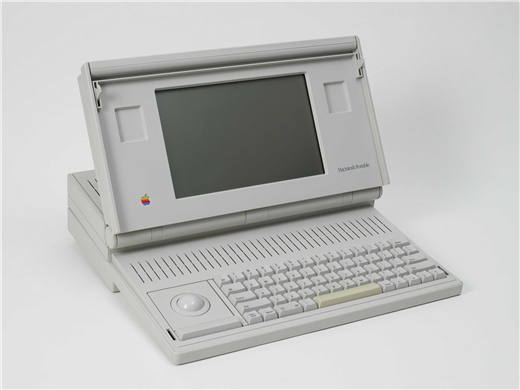© Mark Ollig
Aug. 9, 1991, orbiting 200 miles above Earth, Space Shuttle Atlantis Astronauts James Adamson and Shannon Lucid, using an Apple Macintosh laptop computer, texted an email message to astronaut Marsha Ivins at the Johnson Space Center in Houston, TX.
NASA sent and received the email messages over the AppleLink commercial email online service.
“Hello Earth! Greetings from the STS-43 Crew. This is the first AppleLink from space. Having a GREAT time, wish you were here, ... send cryo and RCS! Hasta la vista, baby, ... we’ll be back!,” announced the first text email from space sent 30 years ago this month.
Cryo means cryogenics, which includes items needed for life support. RCS means Reaction Control System, which uses fuel for maneuvering control.
The back story on the historic 1991 email transmission was to test its reliability for quickly communicating text messages from Earth-orbiting astronauts to NASA’s Mission Control Center. This test was the groundwork for an email system planned for use on the future space station, named Freedom.
Participants on board the space station Freedom would include Americans, Canadians, Japanese, and Europeans. However, due to budget cutbacks, it was not constructed.
The 1991 first email from space had many of us excited on the ground, wondering how long it would be until we could type emails from our computer and send them to astronauts orbiting Earth in the Space Shuttle.
I learned some folks did not have to wait very long.
According to Debra Muratore, the NASA project manager for the 1991 space-to-Earth email test, someone inside NASA leaked the classified email address for the Space Shuttle Atlantis onto a public computer bulletin board system (BBS) a week ahead of time.
Members of the BBS community learned of the classified email address.
Thus, anyone with a computer and a modem could send messages to the astronauts aboard the space shuttle.
“I know who leaked it, and he’s sitting right here in my office,” Muratore said in an August 1991 New York newspaper article.
“I’m going to protect his identity even though I’m going to break his kneecaps when I get off this [phone] call,” Muratore added.
Yikes!
I can only assume she was joking about breaking the guy’s kneecaps.
But, I digress.
The second email attempt from the shuttle astronauts to Mission Control failed because the data switching system had not correctly reset itself.
Atlantis astronauts reported to controllers in Houston they had encountered an error message saying, “The modem pool is not responding.”
Unanticipated increased signaling caused the error, which automatically puts the data switching system into sleep mode.
The unexpected sleep mode occurred after Mission Control had authenticated an email message setup connection the first time.
However, the third and future emails were successful, as Mission Control established the nominal communication protocols required for uninterrupted email messaging.
In addition to Mission Control’s email, astronauts aboard Atlantis received approximately 80 other email messages originating from BBS computer users in Australia, Nigeria, Singapore, and the United States.
So, what did some of these email messages say? “Bon Voyage!” “Happy Landing,” and “Have Fun!” were a few of them.
Yup. Once your email address is out there, you can’t keep away from those unsolicited emailers, even when you are located 200 miles above the planet.
In 1991, NASA hoped electronic email could replace the text and graphics system method currently used by NASA to communicate with the astronauts.
NASA also hoped a future space station would use email messaging to send and receive text messages from Mission Control.
In 1998, construction of the International Space Station (ISS) 250 miles above Earth began.
Nov. 2, 2000, the first American astronaut to reside in the ISS was Bill Shepherd; I imagine he had a nasa.gov email address.
By 2010, internet access was made available to the ISS for the American astronauts and others onboard.
The ISS Twitter user name is @Space_Station.
All the American astronauts onboard the ISS have Twitter handles, including current occupant Megan McArthur at @Astro_Megan.
The Apple Macintosh laptop onboard the Space Shuttle Atlantis in 1991 was not NASA’s only consideration; NASA also tested a personal laptop using DOS (Disk Operating System).
The decision to use Apple’s computer was partly because of its operating system’s extensive selection of software that would work well with various space experiments.
The Atlantis astronauts could monitor and calculate their orbital trajectory status and position relative to the ground using the Macintosh laptop’s SPOC (Spacecraft Personal Orbit Computations) application software program.
Aug. 11, 1991, after completing 142 orbits of the Earth, Space Shuttle Atlantis returned home, landing on Runway 15 at the Kennedy Space Center in Florida.

